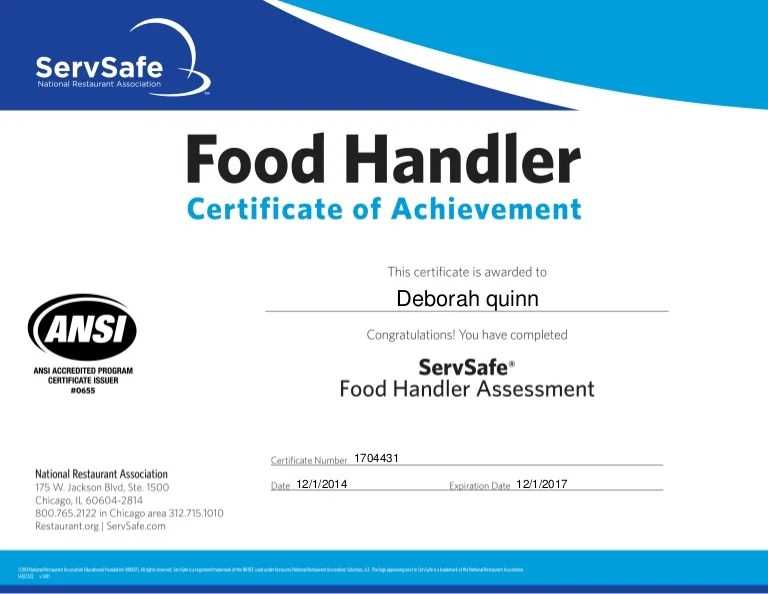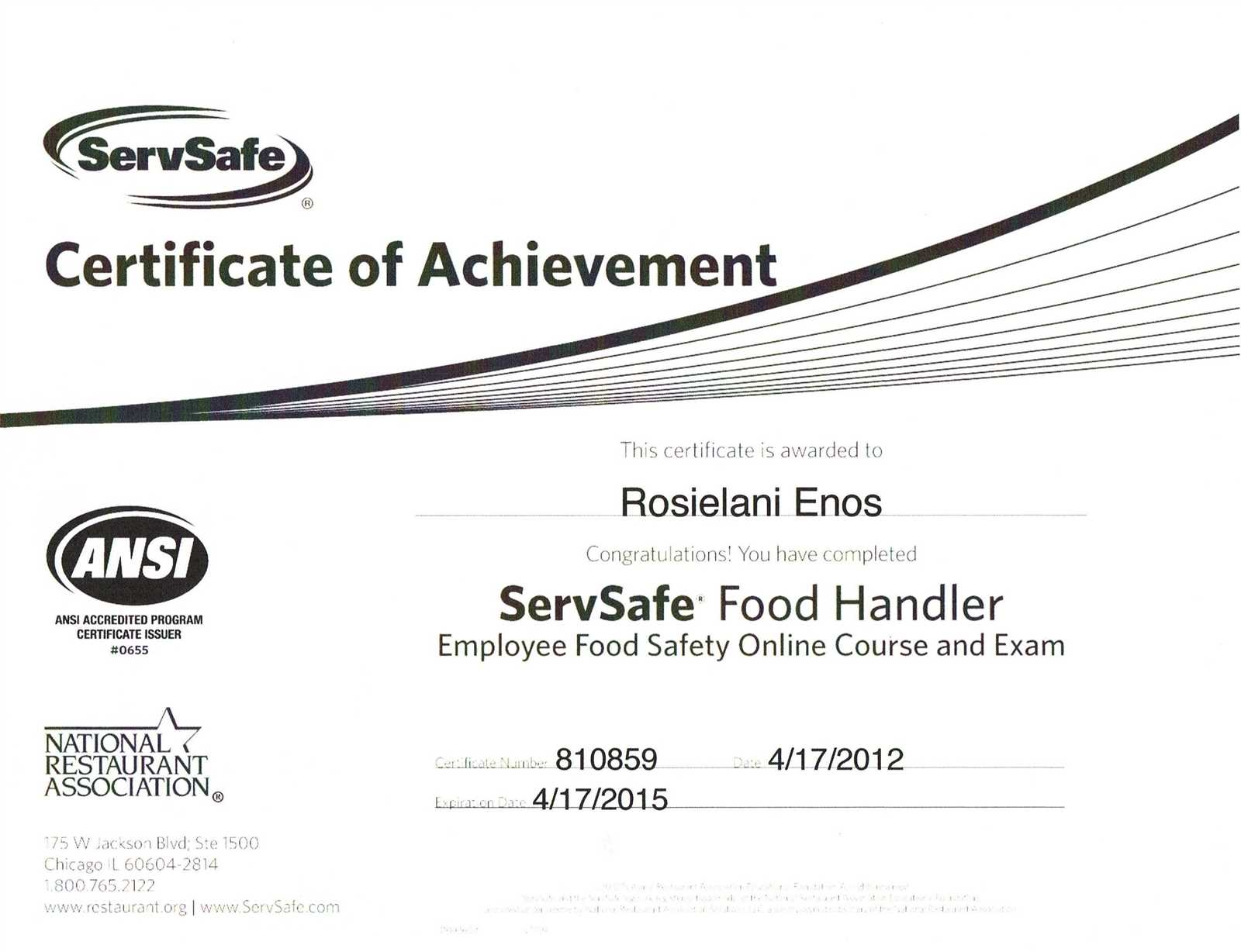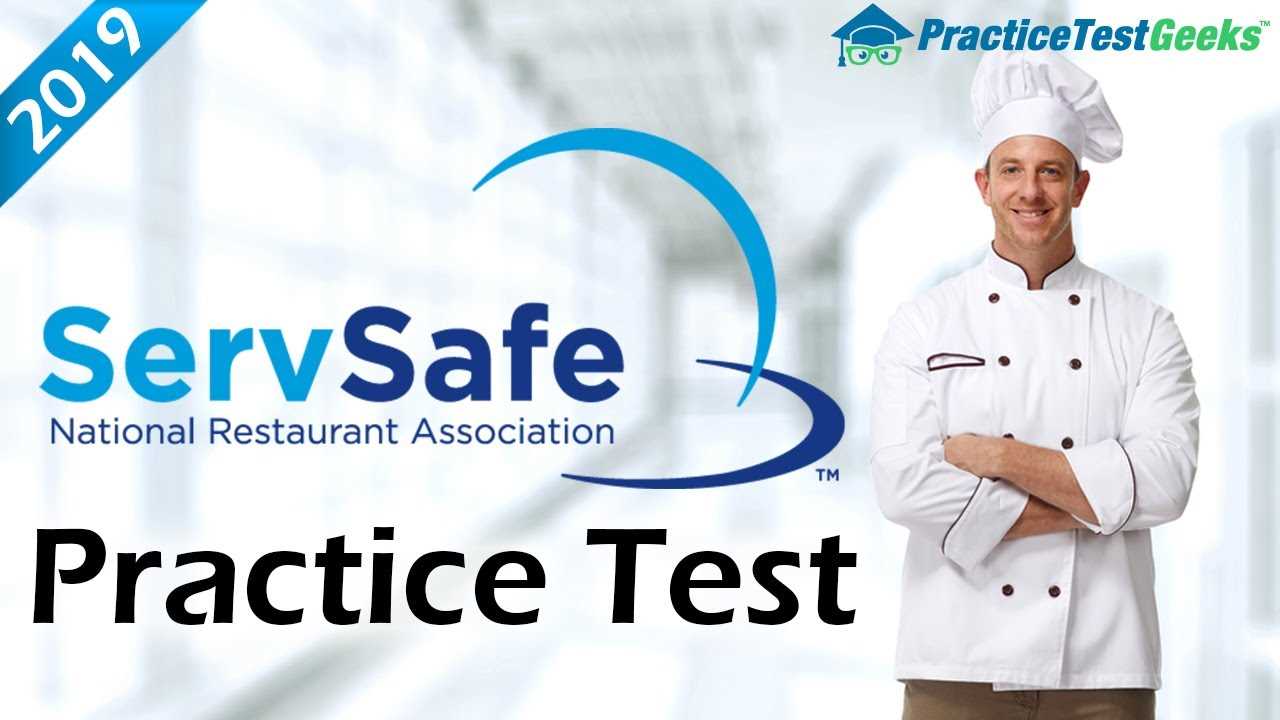
Knowing the exact answers to the ServSafe Food Handler exam is just one part of passing the test. Focus on understanding the core principles of food safety to perform well. Make sure you are familiar with topics like personal hygiene, temperature control, and cross-contamination prevention.
For example, the temperature danger zone for perishable foods ranges from 41°F to 135°F. Foods left in this range for more than four hours can become unsafe. Understand how to properly store and handle food to avoid these risks.
Another key point is cleaning and sanitizing. The difference between cleaning and sanitizing is crucial: cleaning removes dirt, while sanitizing kills harmful microorganisms. Make sure you know the correct concentrations and contact times for sanitizing agents.
Pay attention to employee health policies. Workers with symptoms of illness should be excluded from food handling duties. Understanding when to report symptoms and the proper protocols can save both time and resources in the long run.
Familiarize yourself with the ServSafe manual to ensure you understand the terminology and concepts being tested. Each question on the exam will test your practical knowledge of food safety principles, so preparation is key.
Understanding Key Food Safety Concepts

Maintain proper temperature control. Store hot foods at 135°F (57°C) or higher and cold foods at 41°F (5°C) or lower. Use thermometers to monitor food temperatures, especially during cooking, storing, and serving.
Prevent cross-contamination. Keep raw meats and ready-to-eat foods separate to avoid the spread of harmful bacteria. Use different cutting boards, knives, and containers for raw and cooked items. Clean and sanitize surfaces frequently.
Practice proper handwashing. Wash hands with soap and warm water for at least 20 seconds before handling food, after touching potentially contaminated surfaces, and after using the restroom. Hand sanitizers are not a substitute for handwashing.
Understand food allergens. Be aware of common allergens such as milk, eggs, peanuts, tree nuts, fish, shellfish, wheat, and soybeans. Label food products clearly and avoid cross-contact between allergenic and non-allergenic foods.
Know the dangers of time and temperature abuse. Foods left out for extended periods within the “temperature danger zone” (41°F to 135°F / 5°C to 57°C) allow bacteria to grow rapidly, increasing the risk of foodborne illness.
Clean and sanitize frequently used areas. Surfaces, utensils, and equipment need to be cleaned and sanitized regularly to reduce the risk of contamination. Use food-safe chemicals and follow manufacturer instructions for correct use.
Common Questions and Answer Strategies
Focus on understanding food safety principles rather than memorizing answers. Key areas like temperature control, proper handwashing, and cross-contamination are common topics. Make sure you know the critical temperatures for cooking and storing different foods–these are often directly tested.
When answering multiple-choice questions, eliminate obviously wrong answers first. Often, the exam will have two answers that are similar; choose the one that’s more specific and aligns with food safety guidelines. Be cautious with questions that include phrases like “always” or “never”–these can be tricky and may not always apply in every situation.
For true/false questions, pay attention to the wording. If a statement has even one incorrect detail, the entire answer is false. A common trick is to provide a true statement with a slight exception; if you notice an exception, the answer is false.
Practice with sample questions to become familiar with the phrasing. Some questions are designed to test your ability to apply principles in real-world scenarios. Review answers carefully to understand why a particular choice is correct, not just what the answer is.
Stay calm and trust your preparation. If you encounter a tough question, move on and come back to it later. Your instinctive responses often reflect what you’ve learned best.
Preparing for the Exam: Study Tips

Focus on the key areas that are tested most frequently. Start with food safety basics, such as proper handwashing techniques, food temperatures, and cross-contamination prevention. These topics are commonly covered and are critical to understanding the entire exam.
Use practice exams to simulate the actual test. Familiarize yourself with the question format and identify areas where you struggle. Regularly review your answers to understand mistakes and improve your knowledge in those weak spots.
Study in small, manageable sessions rather than cramming. Short bursts of focused study are more effective for retaining information than trying to cover everything in one go. Aim for 30-45 minute study periods with short breaks in between.
Use mnemonic devices to remember critical information, like food temperature zones or cleaning procedures. These memory aids can help recall important details during the test.
Review the ServSafe Food Handler manual thoroughly. Pay attention to diagrams, tables, and definitions that explain concepts like time-temperature abuse or proper storage techniques. These visual aids reinforce learning and can be useful on the test.
Ask someone to quiz you. Having a study buddy or instructor test your knowledge can provide insight into areas you may need to focus more on, and it can also make studying more interactive and less monotonous.